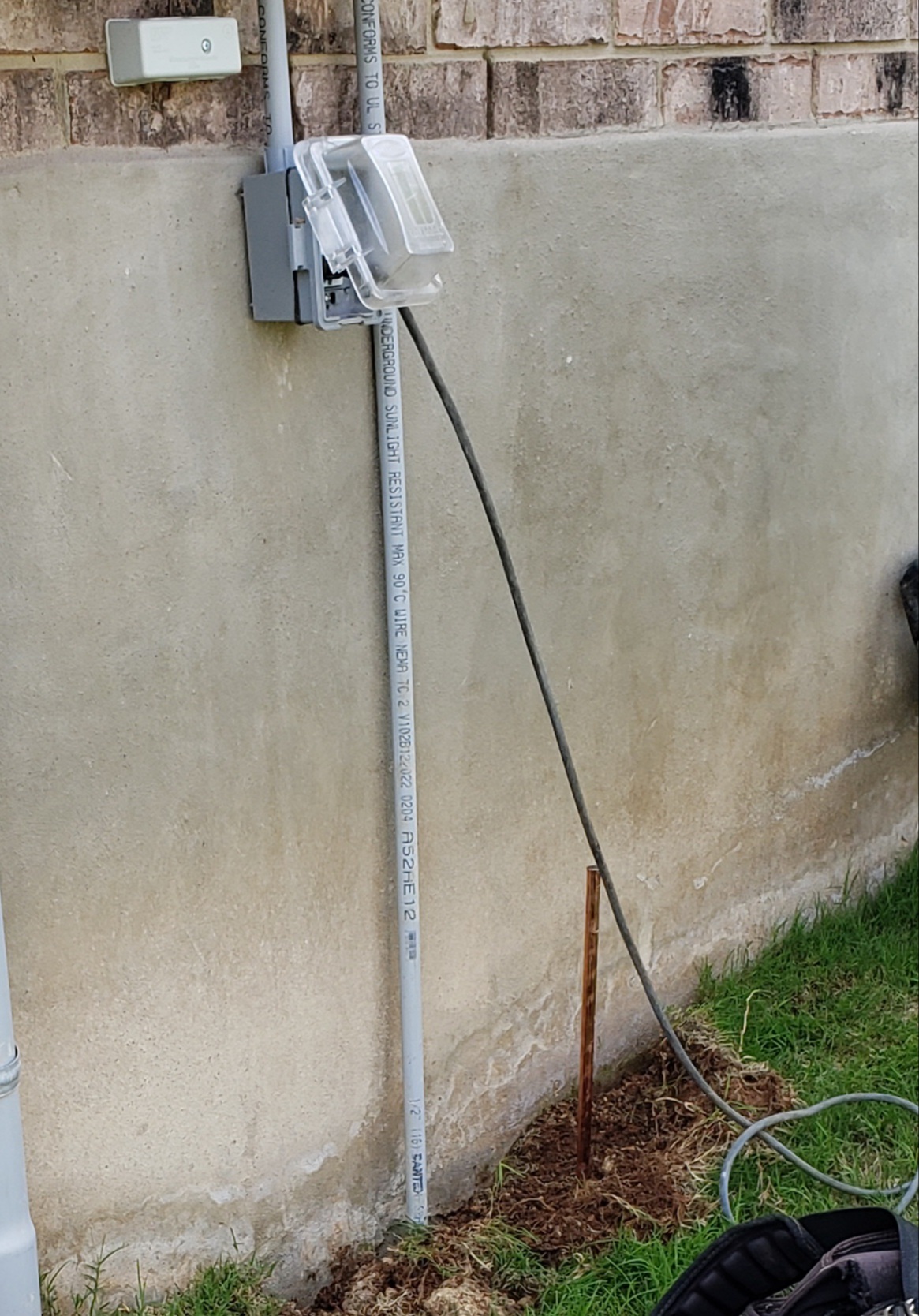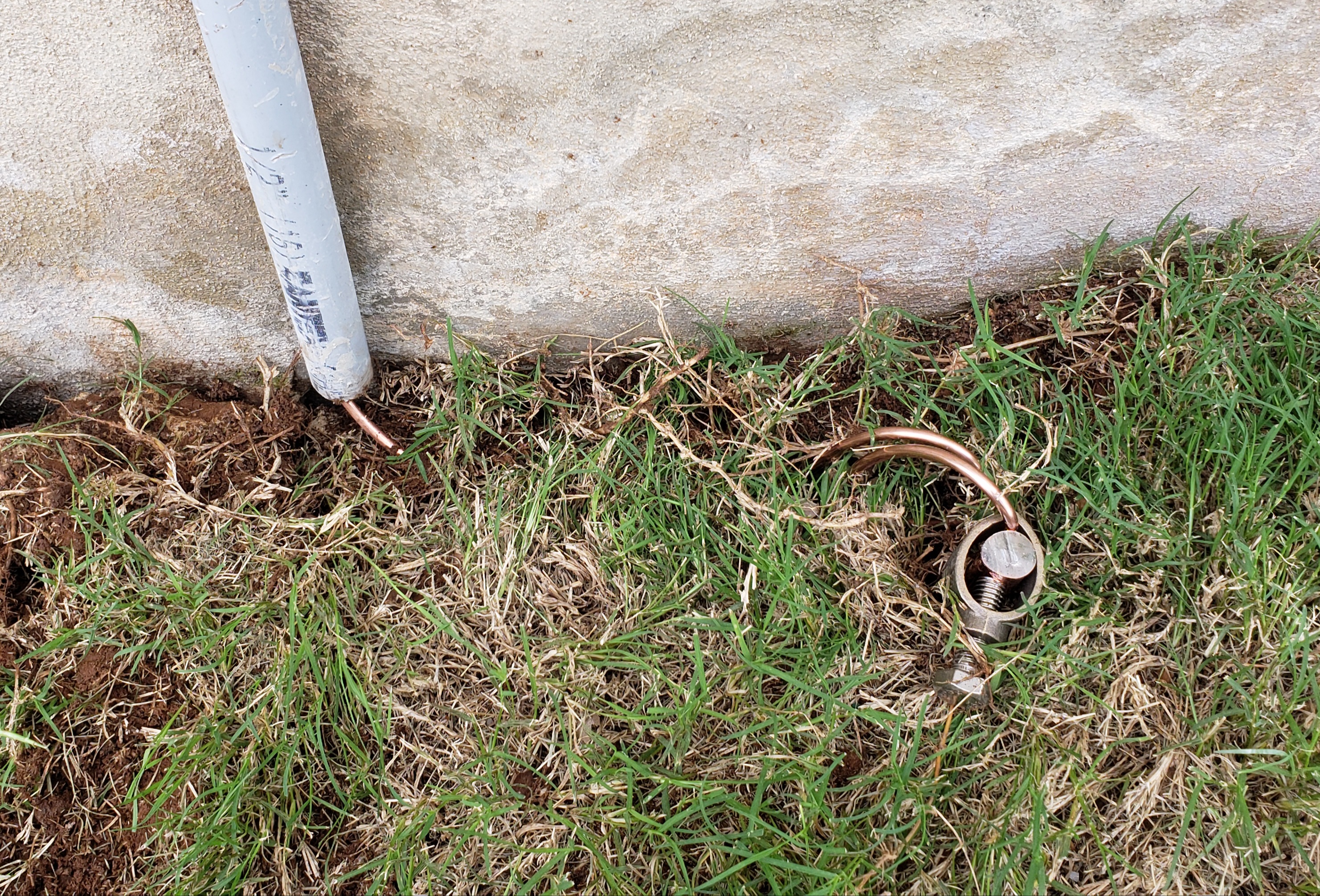BenTheGoodAg said:
JP, I thought I had a copy of the 1996 code, but I couldn't find it. There have definitely been a lot of cumulative changes to article 250 over the years, and it wouldn't surprise me if there were some differences in how it was written for what was probably the 1978 code. This is currently required in 250.32 and has been since at least 2008.
I had a 93 or 96 beat up paperback I tossed a few weeks ago when I cleaned out my office. 250.32 requires an electrode if you have a subpanel or anything fed by a feeder. If you had a single branch circuit or a multi-wire branch circuit feeding a light or receptacle or two, its not required. I've read on a couple of code forums over the years that once upon a time it was often ignored, or it started as a single branch circuit and later upgraded to a subpanel as the mancave grew, and the electrode at the out building never added.
Quote:
And yes, it's there mostly for lightning, but also for line surges, contact with other high voltage lines, and providing a stable voltage reference to the earth/structure. Not there for ground fault current.
I'd also argue that the electrode at the outbuilding does two things: 1. helps ensure a solid ground at the outbuilding if the equipment grounding conductor in the branch circuit or feeder running out there gets dropped, lost, cut, etc., 2. helps to eliminate differences in potential between the two buildings. Suppose the house and the shop are 200' apart. In some areas that could be enough to get into different soil conditions. You could have 15 ohms to ground at house A, but get 27 ohms to ground at shop A, because the reference point is 200' away.
HA_______________ SA
When you add the ground rod or other electrode at Shop B, and bond the equipment grounding conductor to it, you have ensured the impedance to ground is the same at both the house and the shop, because the grounding conductors at each building are bonded, i.e. connected.
HB_______________SB
Keep in mind having an adequate grounding electrode system may help shunt the energy from a lightning strike, but it's not going to help prevent one. Even full on Master Label lighting protection systems don't prevent strikes, they just give them a better target and a faster way down. As an example, a friend's house took a strike years ago. Fairly new house, GES current and correct. It hit the side of the house and rode the refrigerant lines to ground. Blew out the bend of the pipe where it connected to the condensing unit before going to ground. Cooked just about every appliance in the process. It also tripped GFCI receps 2-3 houses down on both sides.





 The 7ft rod is fine especially since you have the Ufer. The busbar can count as the same point, but I would have picked adjacent terminals. I think they should have used a separate conductor to bond the conduit fitting, but it's not against code. None of these are showstoppers or will cause you any issues.
The 7ft rod is fine especially since you have the Ufer. The busbar can count as the same point, but I would have picked adjacent terminals. I think they should have used a separate conductor to bond the conduit fitting, but it's not against code. None of these are showstoppers or will cause you any issues.